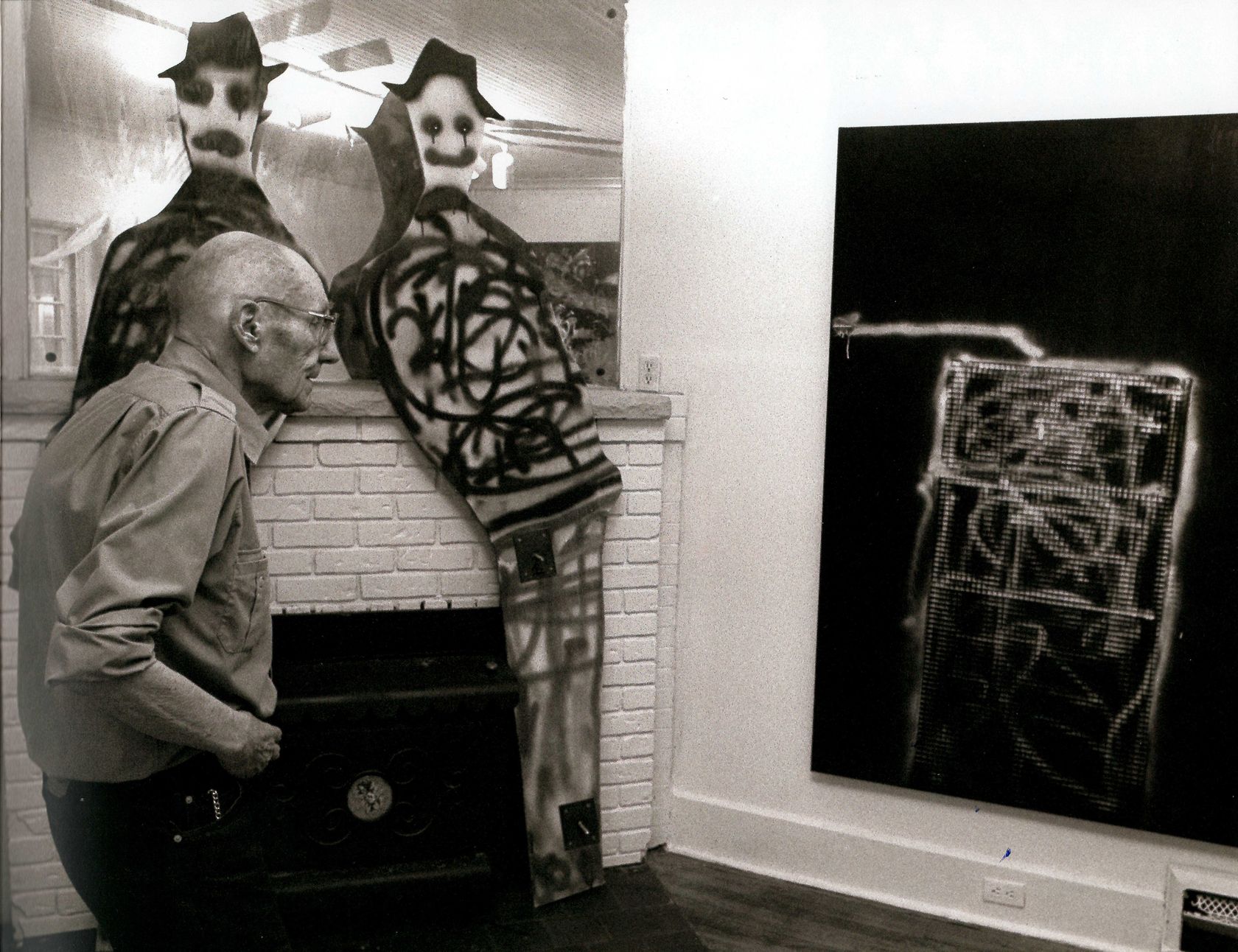To explore our Online Viewing Room, click here.
A major figure of 20th century literature and ingenious inventor of the cut-up technique, William S. Burroughs (1914-1997) has achieved iconic status within the American counter-culture. His influence reaches so much further than just the world of literature and he almost exclusively dedicated the last fifteen years of his life to painting. From 1982 onwards, he experimented with a series of techniques including his shotgun paintings and subsequently his combine paintings, which brought together collage, stencils, ink drawing, spray paint, painting, etc.
True to his non-conformist thinking, Burroughs’ painting sat outside any form of tradition or pre-established set of rules, corrupting the usual means and formats commonly seen in painting. Self-taught and completely without inhibition, he applied paint employing plungers or mushrooms as brushes and using unusual supports such as found wood panels, doors, etc. Automatic works, random processes, found materials and coded calligraphy, the artist’s oeuvre is shot through with shamanistic thought and porous to invisible and magic worlds. It is in this way that his painting is so efficient; it is charged with meaning and prophetic messages, which only reveal themselves to those willing to cross the threshold and enter his world.
The Semiose Viewing Room for Art Basel Miami 2020 brings together an emblematic selection of Burroughs’ works: Iconic, large wooden panels shot through with holes and splattered with paint on both sides (Untitled (August 87), 1987 and Burning Bullets, 1987) ; a collage of images on paper given the cut-up treatment (End of the Line, 1987) and a paranoid handwritten note (AIDS is a Russian Military Weapon, 1983) ; an original latticework pattern sprayed onto canvas (Unworkable Machine, 1993) and a door that epitomizes his painting on objects, with the combination of a wide variety of techniques (Space Door, 1987). While his affinity with Robert Rauschenberg is particularly apparent in this last work, the most recent American expressionist and abstract painting can also be considered as obvious paragons for Burroughs’ oeuvre.
Burroughs’ practice allowed him to continually assess opportunities thrown up by everyday life. He transferred the same cut-up elements from one oeuvre to another, photographing details of his works and gluing them onto subsequent paintings, inserting images of animals, Egyptian imagery or aliens as leitmotivs. His paintings were the physical incarnation of his obsessions, amplified by the variety within the repetition. As director John Waters states “Burroughs did everything he wrote about in his books but in the form of paintings exhibited in galleries. His painting is simply the logical extension of what he’s always done.”
